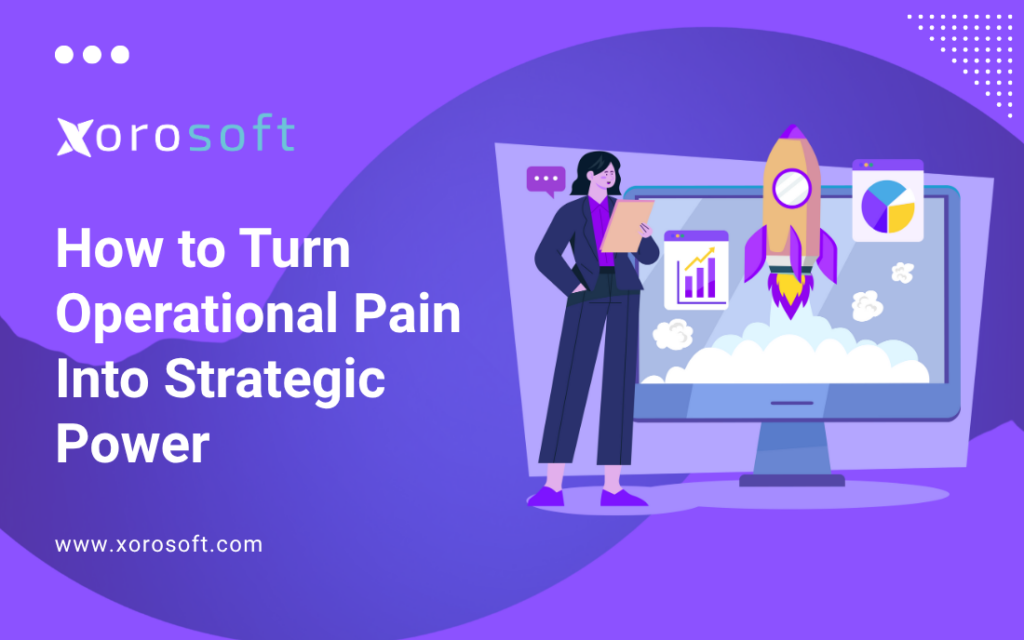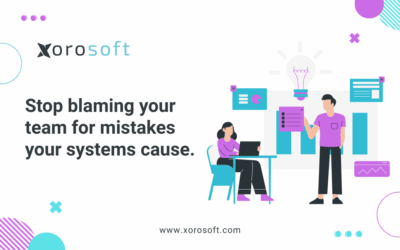
Ecommerce Operations Optimization: Boost Ops Power
Your ecommerce brand wasn’t built to chase spreadsheets. It was built to grow. Yet as your company scales, the daily grind of managing orders, inventory, and fulfillment can easily take over. Without a strong ecommerce operations optimization framework, even success can cause unnecessary chaos.
The good news is that you can easily transform your back-office pain into strategic power. With connected systems, automated workflows, and real-time visibility, your team spends less time firefighting and more time accelerating growth. Consequently, operations start supporting your strategy instead of slowing it down.
How Ecommerce Operations Optimization Solves Disconnected Systems
As your ecommerce brand expands, systems often become fragmented. Inventory lives in one tool, accounting in another, and fulfillment in yet another. Because of this fragmentation, growth can slow instead of speeding up.
When your tools don’t talk to each other, data delays occur. As a result, decisions get made based on outdated reports. However, with ecommerce operations optimization, you can connect every platform into a single source of truth. Consequently, you regain control and clarity.
By automating synchronization between sales, accounting, and inventory, teams can focus on proactive work. In other words, your systems finally start working as one cohesive unit. Furthermore, collaboration across departments improves instantly. Additionally, communication barriers begin to disappear completely.
Why Ecommerce Operations Optimization Eliminates Manual Workflows
Manual operations may seem manageable at first, but they quickly become a burden. When employees re-enter data or reconcile spreadsheets, delays and errors multiply. Therefore, automation is essential for scaling successfully.
For example, a single manual inventory adjustment can trigger hours of cleanup later. Meanwhile, employees waste valuable time fixing preventable mistakes. Instead of hiring more people to manage chaos, it’s smarter to implement ecommerce operations optimization tools that handle repetition automatically.
As a result, your operations become scalable and resilient. Because workflows standardize themselves, every order gets processed faster and more accurately. Additionally, team morale improves as repetitive tasks disappear. Moreover, operational predictability gives leadership peace of mind.
Measuring Success Through the Right Operational Metrics
To truly optimize, you must first measure. Key performance indicators reveal whether your systems are creating friction or efficiency. Therefore, tracking a few core metrics will give you insight into your brand’s operational health.
| Metric | What It Reveals |
|---|---|
| Pick Accuracy | How often correct products are shipped. |
| Order Cycle Time | How fast you process and fulfill orders. |
| Cash Conversion Cycle | How efficiently you turn inventory into cash. |
| Inventory Turnover | How often you restock and sell inventory. |
| On-Time Fulfillment Rate | How consistently you meet delivery expectations. |
When your ecommerce operations optimization software automatically tracks these metrics, you can react instantly. Because insights are available in real time, management decisions become faster and better informed. Moreover, you’ll know which areas need immediate improvement. As a consequence, long-term efficiency increases.
How Ecommerce Operations Optimization Builds Scalable Growth
Optimization doesn’t mean adding new tools; it means connecting the ones you already use. Once your operations align under a unified platform, everything becomes easier.
For instance, automated reorder alerts can maintain stock levels without human input. At the same time, integrated dashboards help finance and operations teams stay aligned.
Therefore, optimization gives you agility. Furthermore, because your data updates automatically, planning becomes more reliable. As a result, your business scales smoothly rather than chaotically. In addition, leadership gains visibility to make decisions confidently. As a whole, the company operates with more focus and flow.
Seven Steps to Achieve Complete Operational Control
A structured plan helps you move from friction to flow. The following steps create a clear path toward optimized performance. Consequently, every improvement compounds over time.
1. Audit Every Workflow for Inefficiency
Goal: Identify repetitive or error-prone steps.
Action: Map your full order-to-cash cycle and document each manual task.
Metric: Hours spent weekly on manual processing.
Once you see your inefficiencies, prioritization becomes simple. Furthermore, your roadmap for automation becomes obvious. In turn, improvements happen faster.
2. Build a Unified Data Foundation
Goal: Eliminate duplicate data and mismatched numbers.
Action: Use ecommerce operations optimization software to connect your sales, warehouse, and finance systems.
Metric: Automated data synchronization rate.
This integration reduces errors instantly and provides accurate visibility. Additionally, it prevents future breakdowns as you grow. Because your data is centralized, scaling becomes less stressful.
3. Standardize Workflows Across Teams
Goal: Improve accuracy and consistency.
Action: Develop SOPs and automate recurring activities.
Metric: Error rate per 100 orders.
Consistency creates reliability, and reliability drives growth. Consequently, your customers experience fewer issues and faster delivery. Likewise, your support team handles fewer complaints.
4. Integrate Channels and Marketplaces
Goal: See a complete view of your operations.
Action: Connect Shopify, Amazon, and ERP data into one dashboard.
Metric: Pick accuracy and real-time order visibility.
Because everything updates automatically, reports become effortless. Moreover, data accuracy eliminates confusion between departments. As a result, collaboration improves across your entire organization.
5. Forecast Demand and Inventory Confidently
Goal: Move from reactive to predictive operations.
Action: Use analytics inside your ecommerce operations optimization system to forecast accurately.
Metric: Inventory turnover and forecast variance.
As trends appear sooner, you can respond faster and with more precision. Meanwhile, purchasing teams gain clarity to order exactly what’s needed. Additionally, overstocking and stockouts both decline sharply.
6. Empower Your Team Through Real-Time Insights
Goal: Enable confident decision-making.
Action: Provide managers with dashboards displaying live KPIs.
Metric: Decision cycle time and fulfillment rate.
Because everyone works from shared data, coordination becomes natural. Additionally, performance accountability increases across departments. As a result, decisions align with business goals more consistently.
7. Review and Refine Continuously
Goal: Sustain performance improvements.
Action: Conduct quarterly audits and weekly performance reviews.
Metric: Automation rate and order cycle time.
Finally, document your results to build operational muscle over time. As a result, your brand becomes both efficient and adaptable. Over time, this discipline turns into a culture of continuous improvement.
A Brand Transformation Story
A DTC apparel company processed over 3,000 orders monthly but struggled with misaligned systems. Each department used separate software, causing data mismatches and late reporting.
After switching to a unified ecommerce operations optimization platform, everything changed. Inventory synced automatically, reconciliation time dropped by 75%, and fulfillment accuracy improved from 93% to 99%. Consequently, customer satisfaction soared.
Because of these improvements, leadership redirected time from fixing errors to launching new collections. Growth became strategic rather than reactive. Furthermore, profitability increased due to better forecasting. As expected, the company achieved sustainable success.
A Five-Day Plan to Start Optimizing
Even small changes can produce meaningful impact. Follow this five-day plan to start transforming your operations now.
| Day | Focus | Action |
|---|---|---|
| Day 1 – Discover | Map your full workflow. | Note every manual or duplicate process. |
| Day 2 – Prioritize | Rank inefficiencies. | Focus on time-draining tasks. |
| Day 3 – Research | Explore tools like G2 ERP Systems. | Compare based on ease of integration. |
| Day 4 – Connect | Test integrations with Xorosoft ERP App. | Measure synchronization success. |
| Day 5 – Review | Evaluate results. | Share early wins to build momentum. |
Within one week, you’ll understand exactly how ecommerce operations optimization can strengthen your business. Moreover, your team will be motivated by visible results. In the long run, this momentum drives larger transformations.
Choosing the Right Ecommerce Operations Optimization Partner
Selecting a platform that fits your scale is critical. Look for:
-
Seamless integration with Shopify, QuickBooks, and warehouse tools
-
Real-time reporting dashboards
-
Customizable automation rules
-
Transparent pricing
-
Proven customer case studies
For more details, explore our Features or compare Pricing plans. You can also review Case Studies to see how other ecommerce brands improved efficiency. Additionally, schedule a consultation to discuss specific goals. Ultimately, choosing a partner who understands your business ensures lasting success.
Transform Operations into a Growth Engine
Your operations can either slow growth or accelerate it. When powered by the right ecommerce operations optimization system, they become your strongest competitive advantage.
Because automation reduces friction, your brand can scale confidently. Meanwhile, teams gain focus, financial accuracy improves, and customers get faster, more reliable experiences.
If you’re ready to see how optimization works in action, Book a demo with Xorosoft today. You’ll discover how connected workflows, live data, and automation can turn operations from a cost center into a growth driver. Consequently, you’ll have full control over every moving part of your business. In short, optimization transforms potential into predictable performance.









